Welcome to On Verticality. This blog explores the innate human need to escape the surface of the earth, and our struggles to do so throughout history. If you’re new here, a good place to start is the Theory of Verticality section or the Introduction to Verticality. If you want to receive updates on what’s new with the blog, you can use the Subscribe page to sign up. Thanks for visiting!
Click to filter posts by the three main subjects for the blog : Architecture, Flight and Mountains.
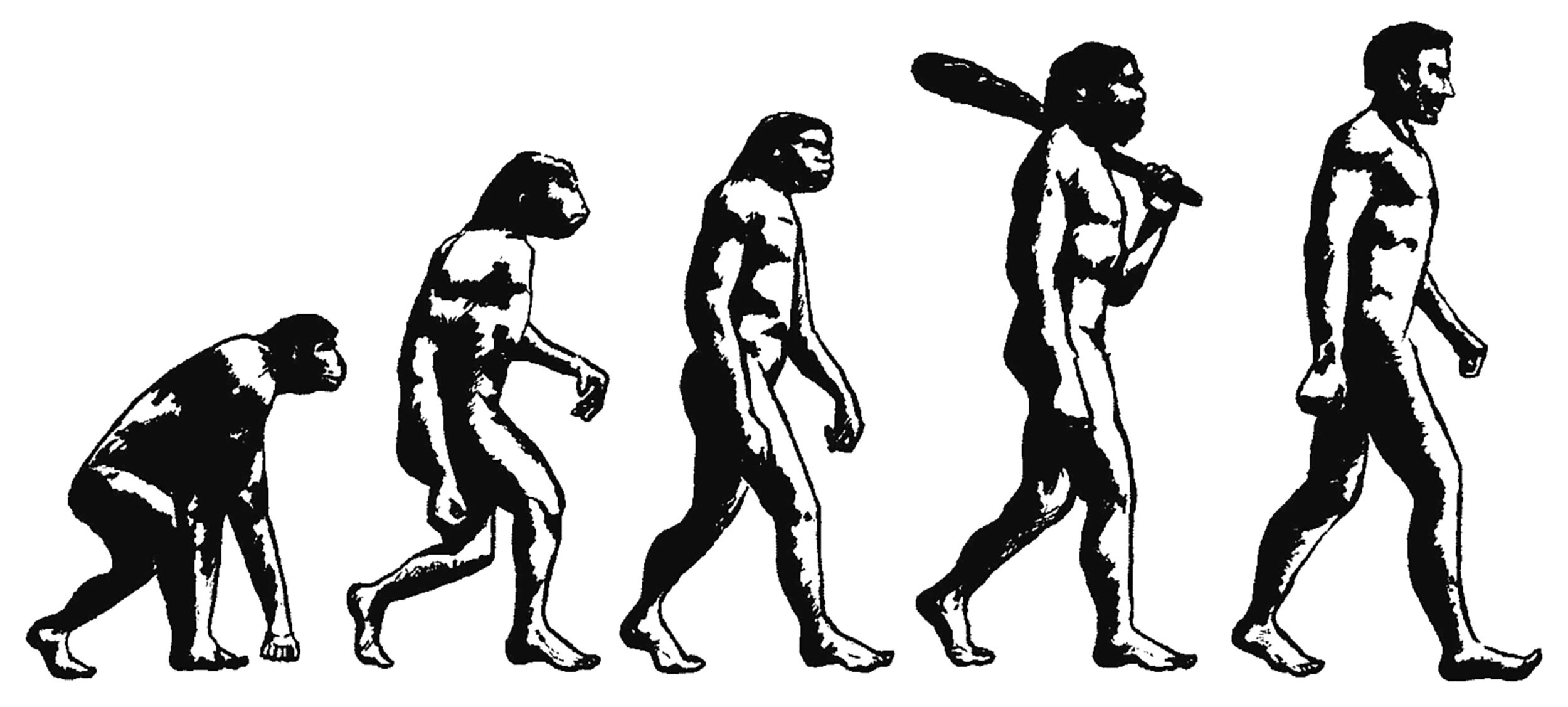
The March of Progress and the Fallacy of Progressive Evolution
Evolution and natural selection are tricky concepts to represent in an illustration. This is partly true because the reality of these processes is so complex and nuanced that some type of simplification is required when introducing them. This is a fine line however, because each concept can easily be over-simplified to the point of confusion. This is exactly what happened with the illustration above. At first glance, it appears to be a simple meme that shows how the human species went from moving on all fours to walking upright, but behind this is a fascinating and painfully unfortunate backstory about the nature of evolution.

The Leaning Tower of Pisa and the Axis Mundi
Pictured here is the campanile at the Pisa Cathedral, known worldwide as the Leaning Tower of Pisa. The tower is world-famous for its iconic four-degree lean, and has become a major tourist attraction for the town of Pisa. This lean has allowed the campanile to become a symbol of the city. If you think of Pisa, you think of the Leaning Tower. This status and appeal comes from the campanile’s lack of vertical equilibrium, which forces visitors to confront the axis-mundi. It’s a unique tension that’s rooted in verticality.
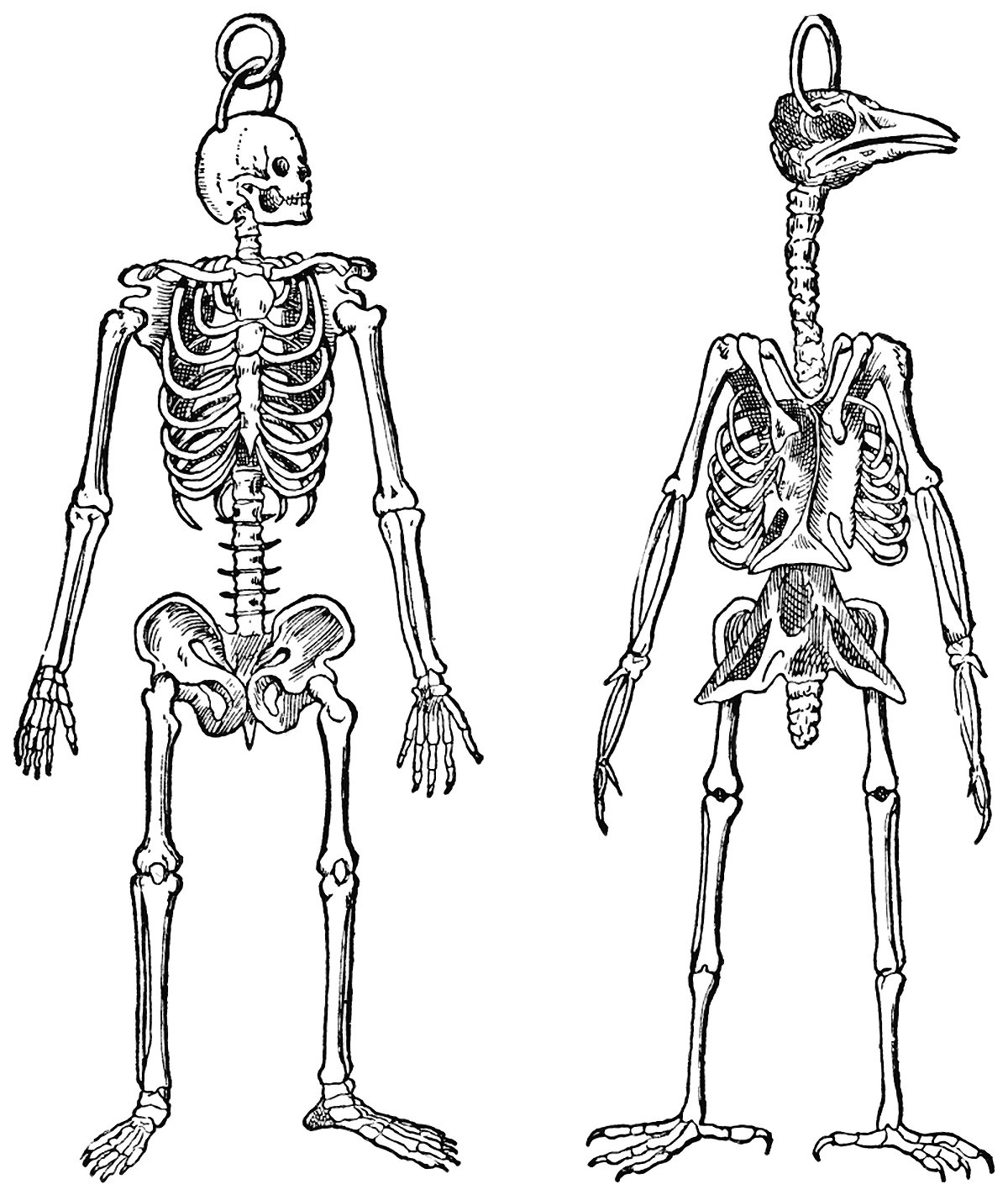
The Skeletons of a Man and Bird
Pictured above is a comparison between the skeleton of a human and a bird. What I find fascinating about this image is the choice of the artist to position the bird in a bipedal stance. I suspect this was done just to ease the comparison, but in a way it undermines the birds power of flight. This is an animal who is at home when in the open air, but here the bird is shown with its feet firmly planted on the ground, much like a human. The playing field has been leveled, so to speak, which puts the bird at a specific disadvantage.
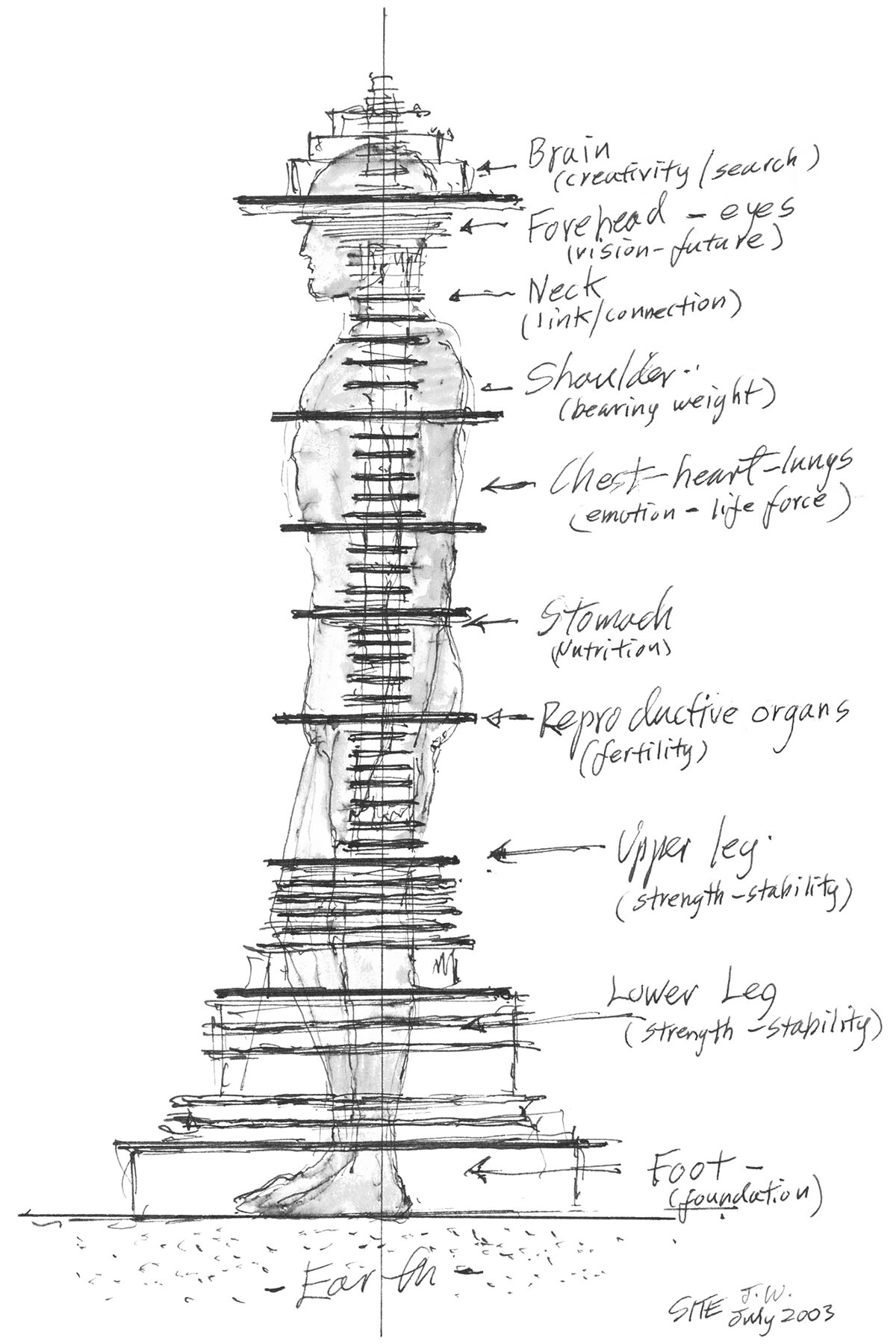
Bipedalism and The Skyscraper
I came across this diagram the other day, and it immediately struck me. It was drawn in 2003 by James Wines of SITE for his Antilia Tower project, and it superimposes a human body on top of a tower section. I’ve previously written about the conceptual link between the bipedal human body and the tower, but this diagram takes it a step further and matches the functions of each part of the body to each part of the tower.
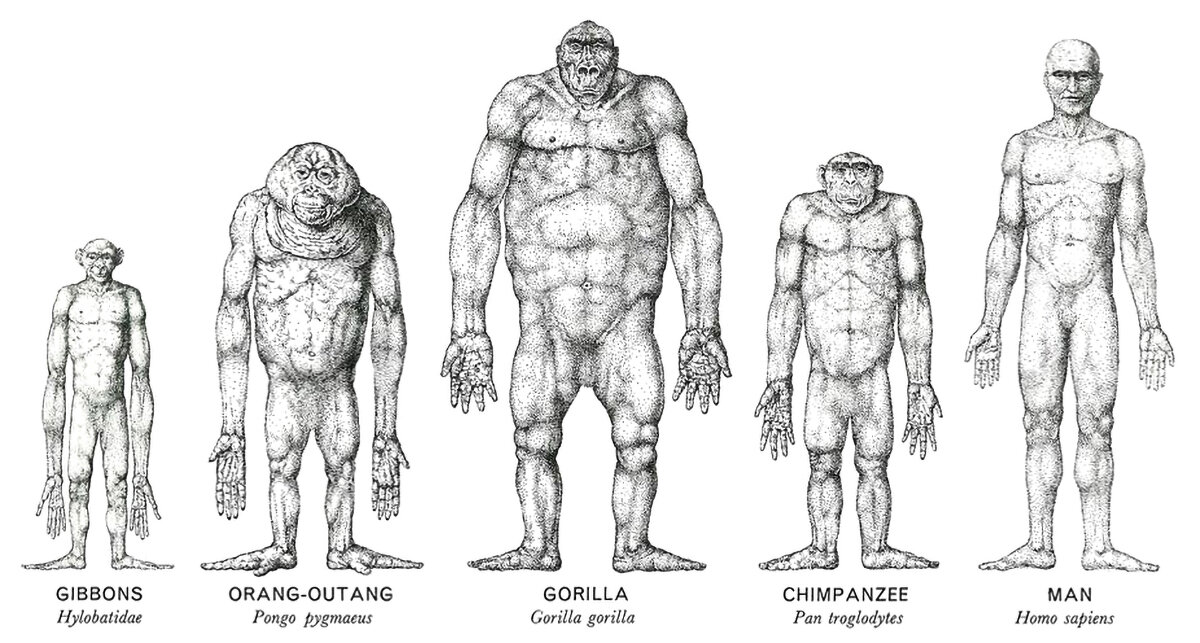
A Comparison of Apes and Man
I’ve been watching a few documentaries on chimpanzees lately, and I’m continuously struck by how similar we humans are to our ape cousins. Our body language and social interactions closely relate, as well as our physical bodies. The major distinction between us and our ape cousins is that we walk upright on two legs. The above illustration caught my eye because It compares the human body to other members of the hominoid family, much like a police lineup. This approach is intriguing, because it shows everyone standing upright on two legs. This, along with removing all hair from the bodies, allows for an easy comparison between the species.
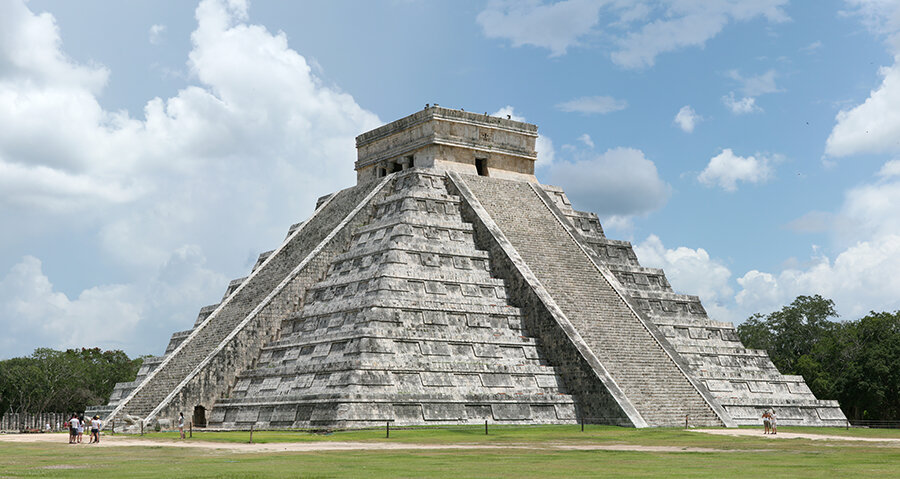
Verticality, Part VI: Archetypes
Man’s initial attempts to get closer to the sky in each of the five cradles of civilization
How does one achieve physical Verticality? At the most basic level, we can get closer to the sky in two ways. First, we can recreate the human body with singular elements that express height on their own. These objects can be seen as proxies for our own bipedal bodies. Second, we can physically raise the surface under our feet in order to raise our bodies up closer to the sky. These constructions can be seen as recreations of mountains, which are the highest places we can reach in the natural landscape. As our ancestors set out to externalize their need for Verticality, they experimented with both of these methods.

Verticality, Part III: Inception
Our first act of descension and our first act of ascension
Our species evolved within the context described in Part I, and our physical surroundings would provide the foundation for our struggles with Verticality, as described in Part II. These early struggles would be defined by two acts. The first is an act of descension: we came down from the trees and out onto the savannah to become surface-dwellers. We would still carry much of the baggage from tree-dwelling life with us, however. I’ll henceforth refer to this baggage as our source-code. The second is the shift to bipedalism, resulting in our upright, vertical bodies. Together, these two acts would set the stage for the future and our never ending struggle to escape the earth’s surface.
